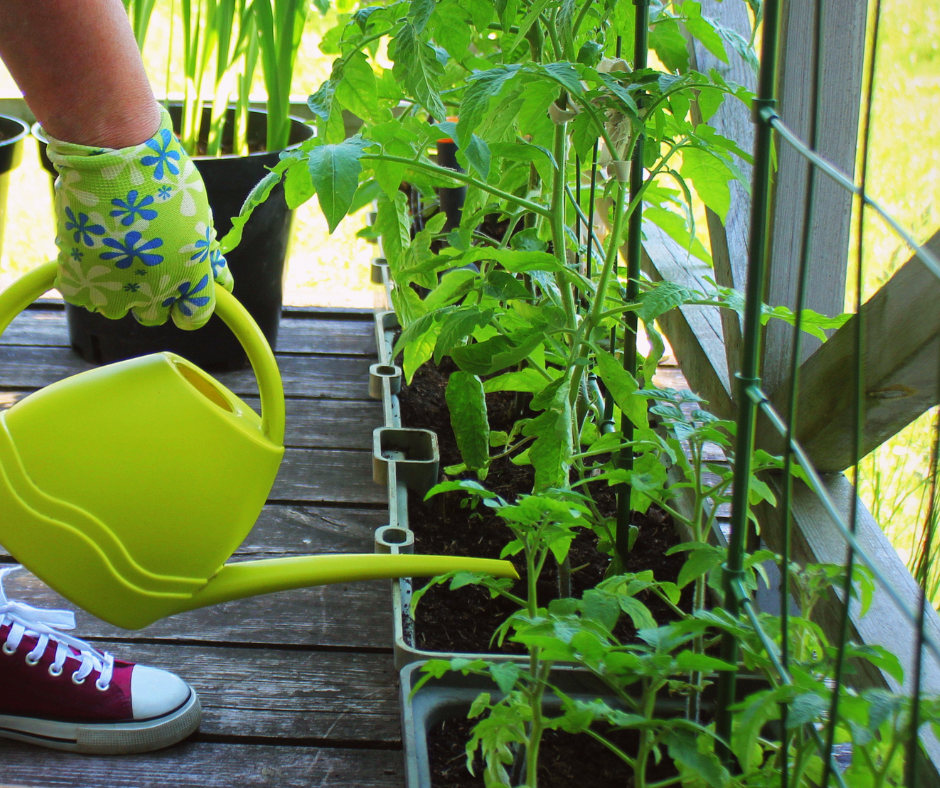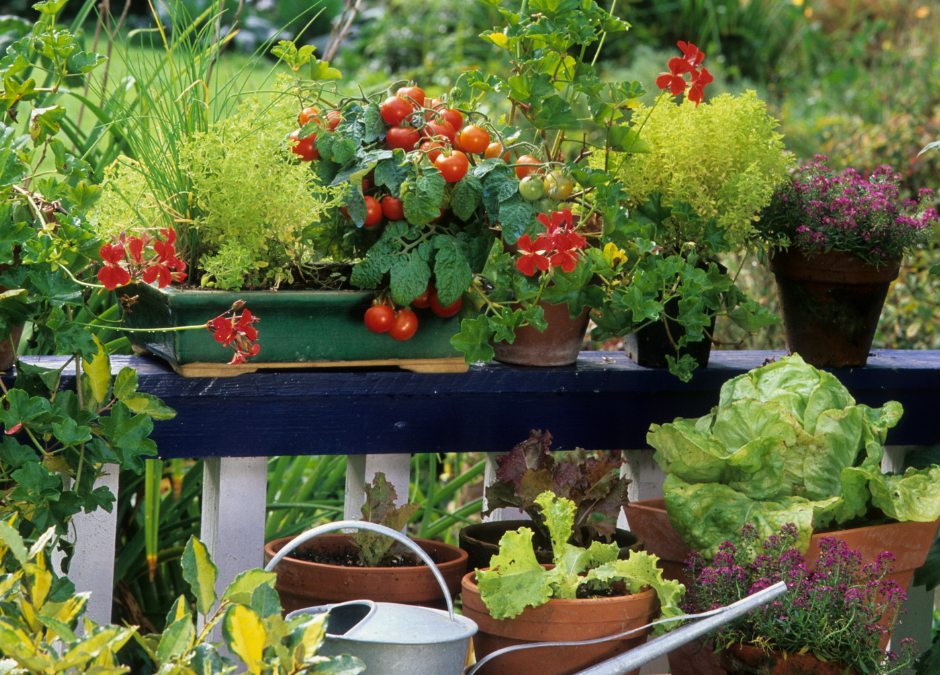Container gardening is a wonderful solution for those eager to grow their own edibles but limited by space constraints. Whether you live in an apartment with only a small balcony or have a modest backyard, container gardening allows you to cultivate a vibrant array of fruits, vegetables, and herbs. Not only does it bring fresh produce to your table, but it also brings the joy and satisfaction of gardening into your daily life, regardless of how much land you have.

Edible Container Gardening Tips
One of the key factors for success in container gardening is starting with a high-quality potting mix. Unlike traditional garden soil, which can be too dense and heavy for containers, potting mixes provide the right balance of drainage and aeration. We’re kind of loving the premium Pro Mix Herb & Vegetable Potting Mix we’ve recently brought into the nursery, and I always have great results with FoxFarm Happy Frog as well.
It’s crucial to remember that edible plants in containers need more than just great potting mix. They also need frequent feeding since their roots can’t spread out as deep into the soil as in ground plants can to find nutrients. An appropriate fertilizer can keep your plants healthy and productive. Mix in some granular fertilizer into the soil at planting, and then offer weekly feedings with a water soluble fertilizer as well. Check out Espoma Garden-Tone or Nelson Vegetable Garden for great granular options, and Medina Hasta Gro, or FoxFarm’s Grow Big and Big Bloom, for water soluble options.

Watering is another essential aspect to consider. Plants in containers tend to dry out faster than those in the ground, especially in warm climates or on windy days. Regular monitoring and watering are necessary to prevent stress and wilting.
Additionally, container plants are more susceptible to temperature fluctuations. The roots of in ground plants are more insulated than those in containers. However, one of the advantages of container gardening is the ability to move plants indoors or to a sheltered location during cold snaps, thus protecting them from potential damage. It’s also fairly easy to wrap a pot with a Planket or N-Sulate frost cloth.

Choose Dwarf Edibles for Container Gardening
To maximize your growing space without overcrowding, consider choosing dwarf varieties of plants. These include bush beans instead of pole beans, Bush or Spacemaster cucumbers, determinate and patio tomatoes, and even dwarf citrus trees, which are perfect for containers. Spinach and lettuces are also excellent choices for compact spaces. For vining plants, such as strawberries, hanging baskets are a clever solution, while vertical frames can support beans and other climbing vegetables, saving precious patio space.

Fall Edibles for Container Gardening
In places like San Antonio, you can extend your gardening season by growing fall vegetables in containers. Crops such as cauliflower, broccoli, and cabbage thrive in cooler weather. When planting most vegetables, ensure you use containers that have at least a 12 inch diameter (though there are some exceptions). The following container guidelines are advised for growing fall vegetables successfully:
Broccoli, Cabbage, Cauliflower (1 plant per pot)
- Minimum: 5 gallon pot with 12″ diameter
- Better: 10 – 15 gallon pot with 16 – 18″ diameter
Kale, Chard, Collards (1 – 2 plants per pot)
- Minimum: 2 gallon pot with an 8 – 9″ diameter
- Better: 5 gallon pot with a 12″ diameter
Greens, lettuce, spinach, arugula (3-4 plants per pot)
- Minimum: 1 gallon pot, 6- 7″ diameter
- Better: 2 gallon pot, 8-9″ diameter

Herbs are fantastic in containers, so don’t forget to include some of these on your patios and balconies as well. Many times they can be nestled in between your veggie plantings to also optimize space. Growing some herbs specifically with the intention of letting them flower can help increase the yield of your veggie harvest, as you’ll have bees and butterflies doing the work of pollinating your vegetables.
With a bit of planning and creativity, container gardening can yield a bountiful harvest and transform even the smallest spaces into productive green havens.
~The Happy Gardener, Lisa Mulroy


Trackbacks/Pingbacks